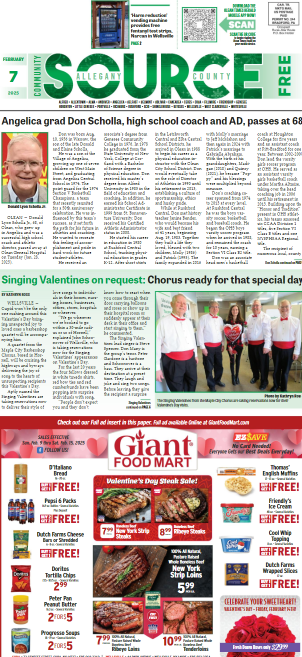ALBANY (TNS) — What is more important: safe roads or clean water? In Upstate New York we can expect snow and, with it, the profuse application of road salt. But the current approach to winter road safety comes at a steep cost. More road salt is used on our state roads than almost any other state in the country, and we’re now learning just how damaging that practice is to our water, infrastructure, health and environment.
That’s why legislation (A4481a/S6976a), which would create a New York State Road Salt Reduction Council and Citizen Advisory Committee, deserves swift passage. The bill doesn’t ban road salt — it promotes smarter, more efficient use and other tools that will help keep our roads safe. This is common-sense legislation rooted in science, data and long-overdue accountability.
We don’t have to choose between safety and sustainability. Municipalities that have implemented salt-reduction strategies — such as pre-treatment with brine, improved plowing techniques and better driver training — have seen fewer crashes and lower salt use. That’s a win for public safety and for our environment. Now here’s the kicker: Reducing road salt use saves money. Big money. Safe roads, a cleaner environment, all using less taxpayer dollars.
Left unchecked, road salt corrodes bridges and vehicles, costing taxpayers millions in repairs, and disrupts delicate ecosystems. High salt levels harm aquatic life in our lakes and streams, and once the salt is in our groundwater, it can take decades to flush out — if ever.
Road salt contamination is not a distant threat; it’s already happening. People with kidney disease or on doctor-prescribed low-sodium diets may unknowingly consume harmful amounts of sodium and chloride. Some New York residents with private wells have had to install costly filtration systems or rely entirely on bottled water. In a state that prides itself on clean water, this should be unacceptable.
Yet we continue to spread road salt with little oversight or analysis. That’s what the legislation’s Road Salt Reduction Council is designed to change. Scientists, transportation experts and local leaders studied best practices and gathered data to inform recommendations designed to maintain safe roadways while using less salt. The next step — codifying the work of this task force and expanding the successful pilot programs that have been conducted — would help scale those strategies across the state.
New York should be a leader in tackling this issue, not a cautionary tale. This legislation is not a ban, or burden, it’s a blueprint for better, smarter winter maintenance.
The Senate passed similar legislation last year, and we fully expect they will again. Our eyes now turn to the state Assembly, where there is an opportunity in the remaining days of this legislative session to protect public health, safeguard our infrastructure, and preserve our environment for generations to come. Let’s not waste it.
(Kevin Chlad is deputy director of the Adirondack Council.)







